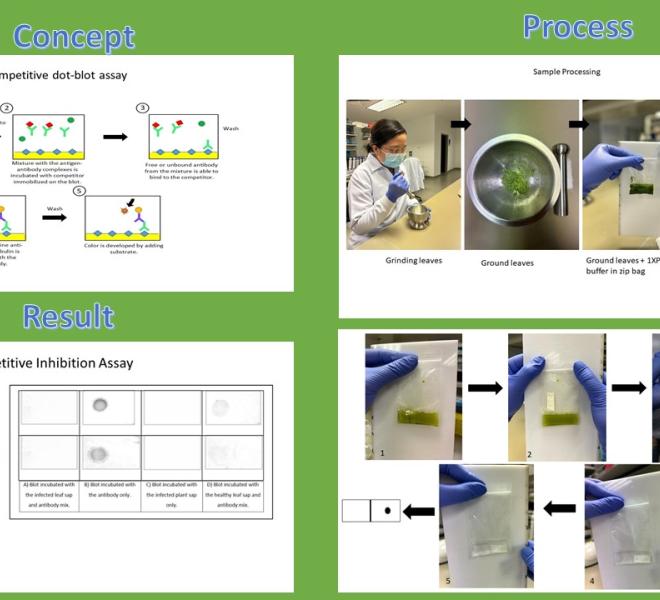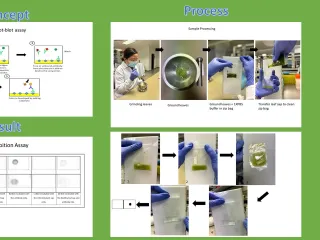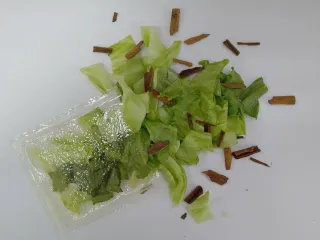Development of a Competitive Dot-blot Assay for Detection...
Description
This dot-blot is designed to detect the presence of tungro in rice plants by exerting the antigen present in plant sample as the inhibitor. In this case, the inhibitor competes with the recombinant CPs of the tungro viruses for binding with the corresponding polyclonal antibodies. The polyclonal antibodies of RTBV-rCP and RTSV-rCP3 were first incubated with the sample to allow primary binding of the antibodies to form antigen-antibody complexes. Once added to the competitor (RTBV-rCP and RTSV-rCP3) present on the blots, only the unbound polyclonal antibodies from the antigen-antibody mixture can bind to the recombinant CPs on the blots. Hence, the more antigen is present in the sample, the less antibody is available to bind to the recombinant antigen on the blots. Therefore, if the mixture is prepared with plants infected with tungro, the blots will deposit no color. In contrast, color will be detected on the immunoblots with the healthy plants.
Highlights
1. One of the advantage of this assay is the use of recombinant proteins as the antigen for antibody production as well as in the assay itself. This overcome the limitation in limited reagents supply, faced by serological based assays for RTD detection.
2. Another advantage of this assay is the reagents are stable in a domestic refrigerator (8-10oC) thus does not require ultra freezer temperature for storage.
3. The fact that it is easy and simple to perform, enable even the community to do it themselves.
Contact Person/Inventor
| Name | Contact Phone | |
|---|---|---|
| Mah Yau Seng | ysmah@unimas.my | 60128813520 |
MRDCS
Award
| Award Title | Award Achievement | Award Year Received |
|---|---|---|
| Earth Sciences | MTE 2023 | 2023 |
Video
Additional Document
| Attachment | Size |
|---|---|
| file-1710494156.pdf (236.41 KB) | 236.41 KB |
| file-1710494156.pdf (264.8 KB) | 264.8 KB |
| file-1710494156.pdf (1.03 MB) | 1.03 MB |






Comment